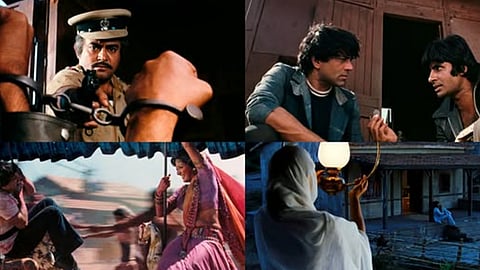
There is no other Hindi film that has cemented its place in public memory quite like Ramesh Sippy’s Sholay. Released on Independence Day, fifty years ago, the film became a major milestone in the history of Indian cinema. From its iconic dialogues to its staggering, unforgettable sequences, Sholay created a spectacle like no other. Its characters became household names, its lines entered everyday speech, and its scenes left a stirring impact on generations of viewers. Who can forget the tender harmonica tune underscoring the delicate yet complex love story between Amitabh Bachchan and Jaya Bhaduri’s characters? Or the pivotal mid-point twist when the camera reveals, with shocking intensity, that Sanjeev Kumar’s Thakur has no arms?
The story behind its making is equally fascinating, filled with exciting anecdotes, interesting trivia and an undeterred spirit of filmmaking. So, as the film clocks 50, here is a look at its extraordinary journey from the first word to the last frame.